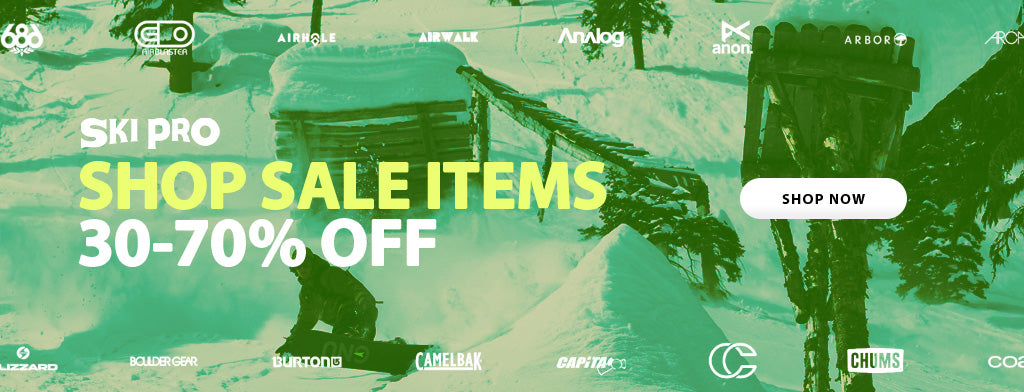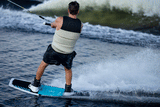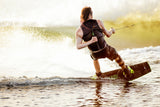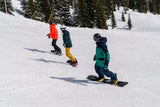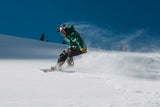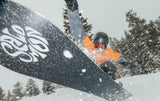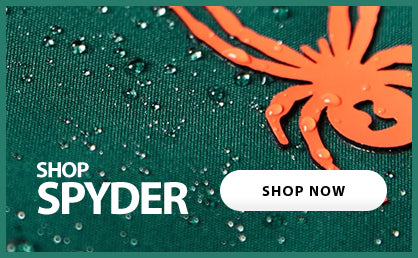How To Choose A Wakeboard
| Rider Weight | Suggested Board Size |
| Up to 85 lbs | 119 cm |
| Up to 105 lbs | 121 cm |
| Up to 130 lbs | 130-131 cm |
| Up to 160 lbs | 132-133 cm |
| Up to 180 lbs | 134-135 cm |
| Up to 200 lbs | 136-139 cm |
| Over 200 Lbs | 140 cm and up |
This chart above gives you a good starting size for most people. Of course, you can choose to go up or down a size as you see necessary. For beginners, it may be easier to choose a slightly larger size, as more surface area can be more stable and easier to control. For those looking to land more tricks and spins, a smaller board size might help reduce weight and make it easier to maneuver quickly.
Profiles
Continuous Rocker
Continuous rocker boards are the easiest profile to learn on. These boards handle well in the water and are generally less catchy. Rocker allows the board to release from the wake more gently, therefore you won’t get bucked or thrown off the wake if you were not intending to. Generally, continuous rocker boards are better for surface tricks and carving because they are less likely to catch an edge and can generate the most speed.
Hybrid Rocker
Hybrid rockers are suited best for intermediate/advanced riders. They are a bit more aggressive than continuous rockers in that they will have much more pop off the wake. More pop = bigger air. Hybrids, however, are still smooth on takeoff and landing as they don’t have abrupt transition zones in their profile.
Three Stage and Abrupt Rocker
These boards are the most aggressive of the bunch. The transition zones on these boards are much sharper and will have a long flat section between the feet. The abrupt transition zones have explosive pop off the wake and tend to have a much more vertical takeoff. When carving, these boards tend to plow water, as opposed to gliding through it. This results in a slower ride and less traction from the fins, so the rider needs to be comfortable controlling the board with its edges alone.
Other Features
Rails
The edges or “rails” or the board have a lot to do with board speed and forgiveness. A hard or sharp rail will be faster in the water, resulting in better carves and ultimately more pop off the wake. A smooth or rounded rail will be more forgiving and less catchy, but will not hold carves as well as a hard rail.
Fins and Fin Placement
Most boards will have some sort of fin system. The most common fin system is molded into the shell of the board. These fins are not removable and are lower profile. Beginners often choose a board with a three-fin system where the center fin creates more stability in the water. Many three fin systems have a removable center fin for when the rider wants a bit less traction. In terms of placement, fins that are right at the edge of the board will have a more “locked-in” feeling, while boards with fins closer to the center will feel much looser in the water.
Channels
Channels help water flow under the board and direct it out the back. Similar to fins, channels help with tracking. A board with many deep channels will track better than boards without. However, channels will make board slides and surface tricks harder as the board will not “break free” as easily.
Bindings
Boot style bindings are the most common on the market. They act as the link between you and the board. Similar to snowboard bindings, wakeboard bindings come in various degrees of stiffness and support. A more aggressive or experienced rider may elect to ride a higher-end boot with lots of support, while a more casual rider will choose a more comfortable binding. Bindings come in two types: closed toes and open-toed. Open-toed bindings can accommodate a range of foot sizes while sacrificing comfort and performance. These are best when there is only one board on the boat for many people. Performance-oriented riders should consider closed-toed bindings as they will have more support and better performance.
